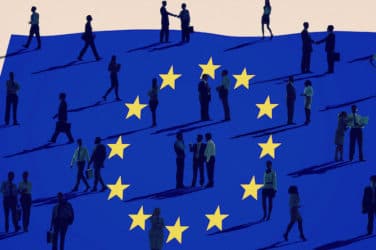
R5FX has gained customers since Deutsche Börse acquired a minority stake in the new electronic market for emerging market foreign exchange.
Jon Vollemaere, chief executive of R5, told Markets Media: “We have picked up two customers since the announcement of the deal and another two are on the fence. The investment is definitely a big stamp of credibility.”
Last month Deutsche Börse announced an investment in London-based R5FX for an amount in the single-digit millions in British pounds.
Brendan Bradley, chief innovation officer and member of the Eurex Executive Board, said in a statement: “Our investment in R5 highlights our focus on using innovation to drive our growth whilst expanding our footprint in the changing FX market place. Deutsche Börse has already developed partnerships with start-ups and has simultaneously invested into exchange infrastructure in a number of developing countries in the recent past.”
Vollemaere said: “Partnering with an exchange is quite useful as we are looking to combine emerging markets currencies and their futures contracts in one place. Deutsche Börse also has a global reach and working with them will allow us to expand much faster.”
R5FX was developed after banks found an increase in demand for emerging markets currencies but found it difficult to trade in markets dominated by voice broking.
Regulations such as Dodd-Frank in the US and Emir in Europe also push foreign exchange trading banks to use electronic trading and regulators want to increase transparency following their investigations into price rigging.
“We have a picture of Gordon Gekko using an old cellphone as an example of the old way,” Vollemaere added. “Like a lot of FinTech a clean, transparent customer centric electronic service is attractive and better for a healthy market.”
R5 aims to launch early next year subject to regulatory approval. It will initially trade 10 currencies – seven in Asia : Taiwan Dollar, Chinese Renminbi, Indonesian Rupiah, Indian Rupee, Malaysian Ringit, Philippine Peso and Korean Won – and three in Latin America : Brazilian Real, Columbian Peso and Chilean Peso.
“Our initial 10 currencies was based on regular meetings with a group of banks,” Vollemaere said. “They are the most liquid and most interesting but difficult to trade. We have another pack of currencies which will be released afterwards.”
The platform will initially serve the interbank market and then open a second liquidity pool which will be open to all market participants.
Vollemaere said 24 banks, who make up about 70% of the market, signed letters of intent to trade on the platform at launch and the company is in the process of completing contracts.
“Our focus is off-shore trading where there are on-shore restrictions,” he added. “There is between 80 and 120 yards of trading every day in these 10 currencies but the process is very manual and there is a need to have a market led electronic tool.”





